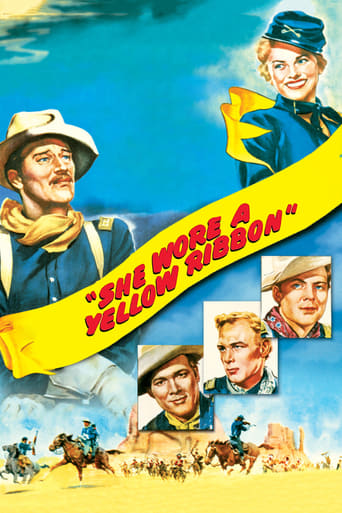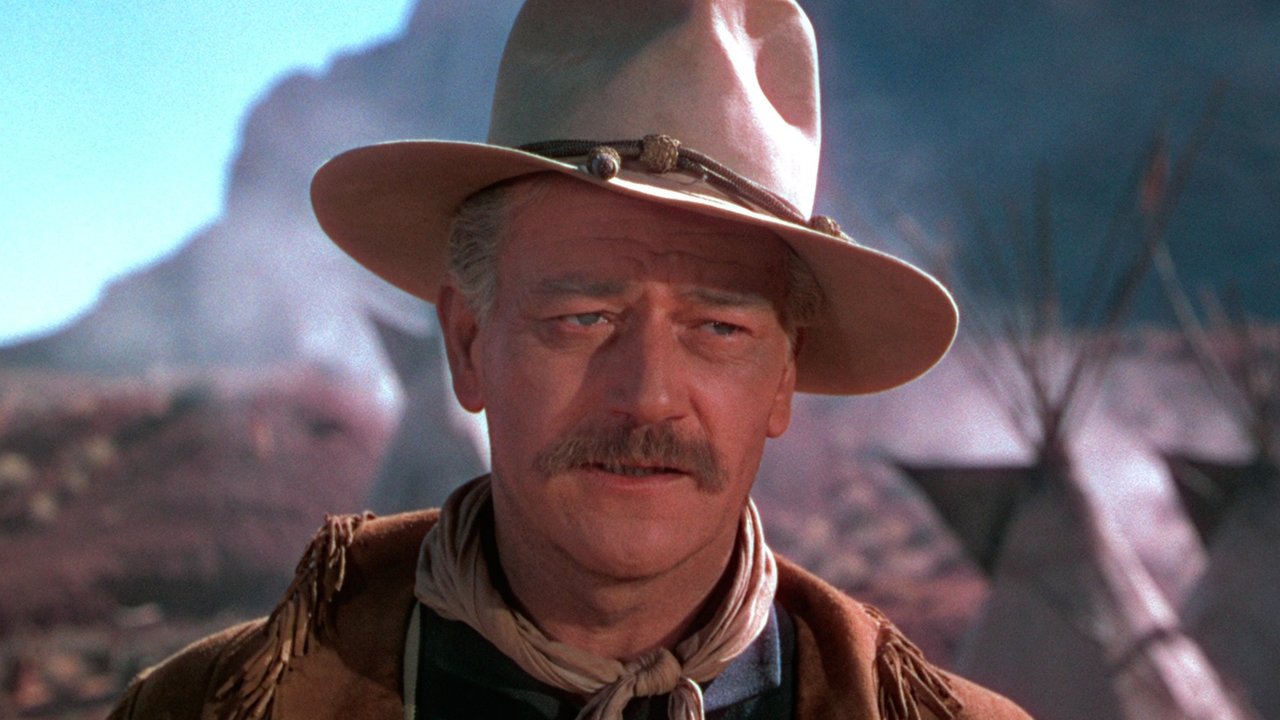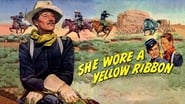elvircorhodzic
SHE WORE A YELLOW RIBBON is a central part of Ford's trilogy focused on the US cavalry. This is a film about pride, love and courage. Each of these properties is in a certain part of the film put to the test. Set design is again magnificent. The colors are vivid surreal. The director evokes the legendary soldiers and western plains. There are not many films that act like fresh. The film, which is an exciting, romantic, and at times even instructive. Emotion to duty is by far the strongest.Actors are skillfully selected. John Wayne as Captain Nathan Brittles, He is the picture of the ideal and legendary cavalryman. Duty, morality and obligations adorn this character. Konjic's natural environment, while the military rank is a way of expression. Of course, there is a girl who brings disorder in young lieutenants. One sergeant took care of a decent dose of humor. Two young lieutenants on exams. Professional and life tests.
Jeff (actionrating.com)
Skip it – People associate the words "cavalry," "Indians," and "John Wayne" with the word "action movie." But where's the action in this one? This is a very disappointing western because it has only two small skirmishes in the entire movie. They are not even long enough to be called battles. Sure, John Wayne is great in his role as an aging cavalry officer mere days away from his retirement. But this is a cavalry "fort soap opera," and if you're not careful you'll find yourself nodding off to sleep. This is the second of the John Ford/John Wayne cavalry trilogy of 1948-1950. Wayne's character is different than the one he plays in "Fort Apache" and "Rio Grande." Yet this story has several characters from those other movies played by the same actors (ex. Ben Johnson as "Tyree" and Victor McLaglen as "Quincannon.") FYI, Even though the trilogy has overlapping characters, it is not meant to be watched in any particular sequence. 1.5 action rating
lrod
It doesn't seem possible that a good portion of the understanding of the Old West in general and the Indian Wars in particular for my generation was developed by watching Hollywood westerns of the '30s, '40s, and '50s (as well as TV in the '50s and '60s), but sadly, it was.I just re-watched SWaYR for the first time in a LOOOOONG time, and it reminds me of just how much of that old time "religion" I'd washed out of my consciousness in the last few decades.Having said that, though, I was entertained.Who can't get goose bumps watching (and listening to) Ben Johnson? To me, he has just about the most recognizable voice in movies. And that horsemanship! Only Yakima Canutt could approach him, in my view.Who can't get weepy as John Wayne surreptitiously reaches for his glasses? Who can have too much of Victor McLaglen in any tavern and/or brawl? (see "The Quiet Man" for another fine example) But, as has been pointed out, there were lots of errors or inconsistencies.How, for example, does one put in 40 years (not 30 as several have reported--do the math), serve in the Mexican War, the Civil War, and the Indian Wars and not get past Captain, even in those slow promotion, downsizing from wartime years? Brittles had to have had a fairly high brevet rank in the CW, but it's never mentioned.How does Allshard make Major under the same conditions and not have 40 years in? How does Brittles get promoted over him to Lt. Colonel at the end? Is Chief of Scouts not subject to mandatory retirement? And to some other posters, the Medal of Honor was indeed originally intended for enlisted men and non-commissioned officers in its original incarnation. However, only a year or two later (1862), it was expanded to include officers, as well. Still, many didn't get their CW MoHs until decades after the War.Oh, well, I've been told many times to relax, sit back, enjoy the entertainment and not sweat the details. But, damn! A fort under a bluff? The image of hostiles lobbing fireballs onto the parade ground (or wooden roofs) from above just grates on me.
Ilpo Hirvonen
Something inspired John Ford to make a cavalry trilogy in the late 1940's. It started in 1948 with Fort Apache, continued by She Wore a Yellow Ribbon, one year later, and the last of the trilogy Rio Grande (1950). The film in the middle, She Wore a Yellow Ribbon, was the only one shot in color and that is one of the things people remember it by. The gorgeous soulful images of the wild west gave Winton C. Hoch an Oscar for Best Cinematography. The reason why Ford decided to make the trilogy is simple; he and his crew took part in WWII which was an experience that changed his career for ever - all of his subsequent films would be about war in one way or another; no matter whether it was a comedy (The Quiet Man) or a ruthless western (The Searchers).An old captain Nathan Brittles is five days away from being retired but the death of 200 hundred soldiers lead him to his last mission. He's not sure what to do after he gets retired because the cavalry is where he belongs. He is in between of past and future, and is unable of talking about his feelings; except the monologues to the grave of his wife which represents direct discussion with history - the only time he feels as his own; the theme of aging was a very common theme for John Ford.She Wore a Yellow Ribbon is a nostalgic western characterized with beautiful images full of sentimentality about the past of a nation, history and presence. It's important to remember that a historic film is always a description of two different ages, intentionally or unintentionally, the age portrayed and the age the film was made in. John Ford's films of the cavalry trilogy are without a doubt allegorical tales of post-war States; meanings and feelings about the war. The trilogy most certainly isn't escapism that someone might easily think it is - the topic is very serious, history isn't the main topic - but the presence.The film is remembered for its soulful imagery, not just because of the beauty in them, but because they defined the film. She Wore a Yellow Ribbon speaks through images and sounds - not through the story. Sentimentality, emotions about yearning and loss, the dignity of recessive men are passed to the audience through sights and sounds - not through textual themes.The visual magnificence of She Wore a Yellow Ribbon really speaks to its viewer. The extraordinary, mythical, colors are like directly from a beautiful mural where small details just start to melt and lose their meaning - personal melancholy clearly exhales from these soulful sights and sounds.



 AD
AD





